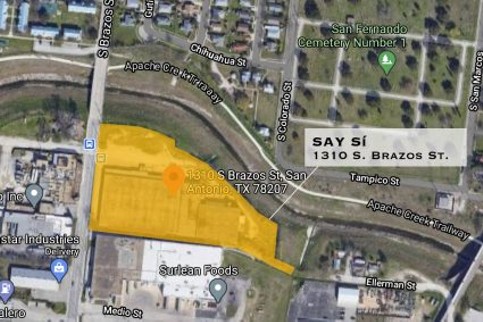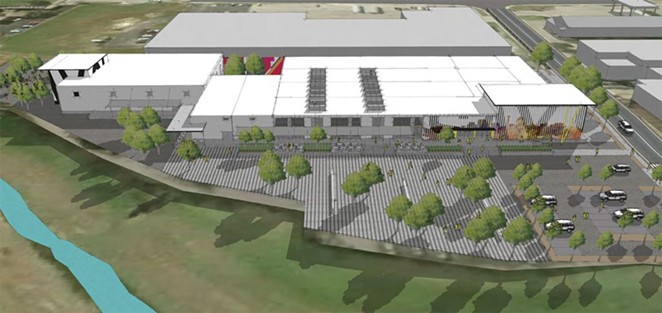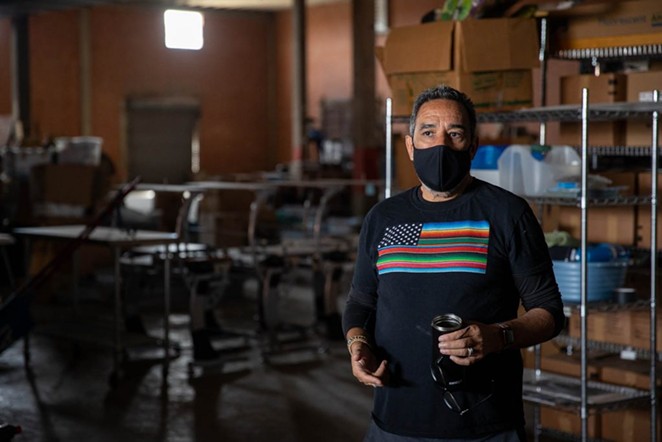
“We really thought that was going to be our home forever,” says Jon Hinojosa, SAY Sí’s long-time executive director. As demand for its programs grew over the years, Hinojosa says, so did SAY Sí’s need for space. But by the time the organization was looking to move, property values in the neighborhood it had grew up in climbed too high. “What happened in Southtown and the Blue Star area is that it’s become gentrified,” Hinojosa said. “So all of the spaces that we were looking at, we just couldn’t afford any more.”
A fortuitous chain of events led to SAY Sí purchasing four buildings from the San Antonio Housing Authority (SAHA) totaling nearly 100,000 square feet on five acres next to Apache Creek on the West Side. After engaging with schools, cultural institutions, and various city departments, the group pulled the trigger on the move—sold the South Alamo building and purchased the building cluster at 1310 S. Brazos St. SAY Sí built a team of consultants, put together a $22 million plan to revitalize the property, and attracted a group of funders to cover the cost.
Then the pandemic happened. Many of the backers SAY Sí had lined up diverted their donations toward first responders, early Covid-19 testing, and the San Antonio Food Bank.
Having spent the last year securing alternative sources of funding, SAY Sí is using a leaner dollar stream to “value engineer” the South Brazos property in four stages. This month, just over a year after the organization had to cancel in-person instruction, the institution is preparing a partial opening of its new facility with the goal of re-admitting students by the summer—health conditions permitting. (More than half of SAY Sí’s 14-person staff has received at least one vaccine shot as of this writing; SAY Sí will await health instructions regarding minors, and has plans to start a pod system for separate program areas.)
The first phase will use city funding for exterior renovations, including creating ADA access and parking, and landscaping, including beautifying the entrance. But the overriding goal for Phase 1 is to resume in-person programming. SAY Sí will reopen at first with an 18,000-square-foot facility that will recreate the four main studio spaces on South Alamo.
“We’re a project-based learning organization,” Hinojosa explains—hands-on mentorship is essential. SAY Sí’s media lab covering film and photography, and its new media program covering game design and coding, have already been outfitted with electrical, IT, and ethernet connections that will support large computer banks built with social distancing in mind. The group has also ported its visual arts studio into a larger new space, and recreated a performing arts zone that will double as a classroom and performance area until SAY Sí is able to build a black box theater and full-scale proscenium stage in later stages of renovation.
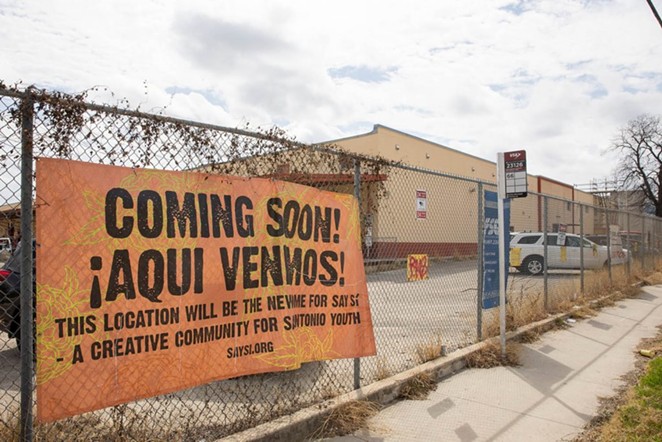
SAY Sí persevered in its relocation thanks to a few key sources of funding. The City of San Antonio contributed $3 million toward exterior renovations via a grant from the Westside Tax Increment Reinvestment Zone (TIRZ), which uses the rise in property tax revenue to fund infrastructure upgrades within the TIRZ boundary.
Additionally, Bexar County committed $1 million. And the Butt family—the Charles Butt Foundation, and Deborah and David Rogers—have also been “amazing supporters,” says Hinojosa, providing more than $500,000 toward the new space.
Hinojosa foresees the new SAY Sí as “a place that can help ground this area.” He’s excited about working with West Side neighbors they’re settling alongside. The new place is a five-minute walk from the Alazán-Apache Courts, the storied public housing community whose rehabilitation strategy has been the source of a bitter fight between West Side preservationists and SAHA, which owns the 23-acre property. Although tensions subsided recently when SAHA announced it would keep the courts as 100% public housing after redevelopment.
One of those preservation groups is the Esperanza Peace and Justice Center, a long-running social justice organization that also received $1.5 million in Westside TIRZ funding in December to rehab a series of historic West Side casitas at its Rinconcito de Esperanza hub.
“What I think folks are recognizing—nonprofits, especially, that are working in community — is (that) we should take advantage of the systems that are in place,” says Hinojosa. “Just because we’re a nonprofit doesn’t mean we can’t go for these development dollars. We’re enhancing and building community.”
Though it’s only a five-minute drive from its former campus, SAY Sí’s move represents a shift in its mission’s center of gravity. The group was already serving youth from the public schools in the new neighborhood, but now the West Side is ground zero for future recruitment. Hinojosa’s own children attended the multilingual program at nearby Tafolla Middle School, and his wife worked there for 18 years.
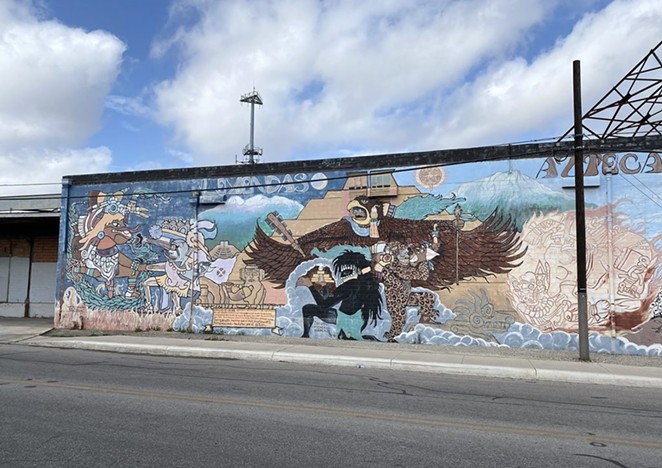
Today, Hinojosa can be found at work directing construction at the new site. But many of SAY Sí’s day-to-day functions fall under the purview of a new generation of leadership: managing co-directors Nicole Amri and Stephen Garza-Guzman.
“SAY Sí definitely changed my life, the trajectory of my education and career,” Amri says. She first encountered SAY Sí as an eighth grader on her way to a magnet program at North East School of the Arts, majoring in visual art. “It just was a different vibe walking into a gallery and seeing art on the walls by artists my age.” Since that moment, SAY Sí has been a “river ride that I just haven’t gotten off of,” Amri says, laughing.
By 16 she was mentoring kids in SAY Sí’s middle school program. Amri graduated from the University of Texas at San Antonio in 2012 with a Bachelor of Fine Arts degree in painting and a bachelor’s in communications with a minor in nonprofit administration. Early in her professional life she worked in spaces vastly different from SAY Sí: a juvenile detention center, the alternative public school Pickett Academy, the Children’s Hospital of San Antonio, and a battered women’s shelter. Her first full-time role at SAY Sí was coordinating the organization’s Artists Building Communities program, “the hidden gem of what we do,” she says. “What SAY Sí does well is ask why things have been done the way they were done, and courageously takes risks to change it up for the better,” Amri adds about how the institution has grown, as she’s grown along with it.
Garza-Guzman got his first “big boy nonprofit job” as the interim marketing coordinator of a West Side institution, the Guadalupe Cultural Arts Center. He had two interns under him, both of whom were SAY Sí alumni. He met Amri at an art opening after distributing flyers for the Guadalupe in Southtown, and the two “had a pretty intense conversation about nonprofits in San Antonio, and shared our dreams of how we wanted to see things change for our city,” he says.
Garza-Guzman joined SAY Sí in 2012, and the roles that he and Amri inhabit now started to take shape the following year, after Hinojosa faced a medical scare. Today Amri and Garza-Guzman oversee staffing, programs, fundraising, marketing, community relations, and events, with individual priorities focused on each’s past experiences and expertise.
Amri and Garza-Guzman both have deep roots in the West Side. Amri’s grandparents met at the Chili Bowl (the decades-long annual rivalry game between the Lanier and Fox Tech high school football teams), and her “whole growing up was on the West Side.” Garza-Guzman graduated high school from Christian Academy of San Antonio, which is now Jubilee Lake View University Prep, on Castroville Road inside the old Centeno grocery store building. “I hold 78207 very close to my heart,” he says.
“Growing up I was very aware of the differences between my side of town and other areas of this city,” he said. “When I was first able to drive, I would just explore San Antonio, and I noticed how a person’s ZIP code determined the quality of their school, homes, and streets. Even in college, when I got my first taste of an academic setting where my fellow students were no longer from my neighborhood, it became very clear to me that people had in their heads what a ‘West Sider’ was—poor, ghetto, and dangerous. That history of racial and economic segregation in San Antonio lives on today.”
“Our proximity to other cultural and community organizations (will) allow for collaborations with organizations and entities that have been doing this work for a very long time,” Garza-Guzman adds. His former workplace, the Guadalupe, is next to Alazan courts on South Brazos. And SAY Sí’s new venue sits directly across from “Leyendas Aztecas,” one of many West Side murals commissioned by San Anto Cultural Arts, itself a venerable youth arts organization that was born in the heart of the West Side.
“So that becomes our next conversation: Who are we? What do we do? Who can we connect with (in) understanding the struggles of this area?” These are the questions Hinojosa asks today.
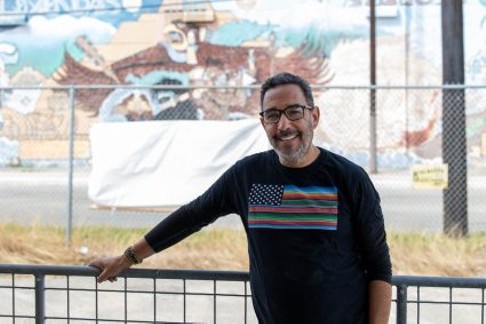
'We're going to figure it out'
In building its new hub, SAY Sí has consulted with many stakeholder groups. These include city leaders like outgoing District 5 Councilwoman Shirley Gonzales; city institutions like SAHA, San Antonio Water System, and the San Antonio River Authority; local schools; and health and human services organizations.
The “big, big question,” says Hinojosa, is the timeline for future phases. “I don’t know, but we’re going to figure it out. That’s my new answer to everything.”
Once the first phase is complete and health conditions permit in-person instruction, SAY Sí will be off and running. Thanks to the four-building layout, future renovations can be conducted without interrupting operations in the 18,000-square-foot space that will first open.
Phase 2 will be more expensive. “We’re back at looking for funding, looking for resources and submitting proposals,” says Hinojosa. In addition to the aforementioned city and county funding, SAY Sí is in a good position to potentially receive an influx via New Market Tax Credits, a federal program that attracts investors to put equity into low-income communities in exchange for tax credits
Hinojosa thinks the odds are “pretty dang good,” since SAY Sí’s nationally recognized track record and ongoing mission trend indisputably toward college placement and community enrichment. Much is on the line: between $5-7 million. “That jumpstarts our Phase 2,” Hinojosa says in the hypothetical.
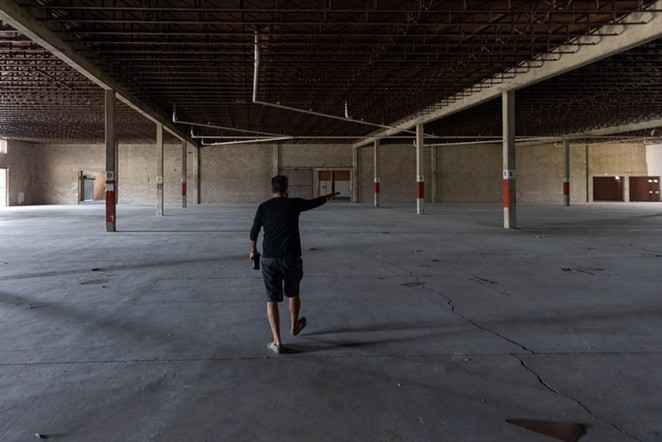
Future areas of SAY Sí program development aim to expand the institution’s core mission of providing college- and employment-track opportunities to marginalized youth and their adjacent communities from a stable, well-resourced base.
The canvas is large and the passion is there. Amri envisions a dynamic, multi-disciplinary space where future students can “have their very own DoSeum, or very own Blue Star.”
“We’re talking about kids and families that don’t typically experience the whole city, and I’m really excited to be that little hub that changes that cycle,” she said.
As part of its expansion, SAY Sí has announced three new core programming areas: music production, journalism, and culinary arts. The nonprofit has piloted some podcast production projects to date, but student interest has led to a wider recalibration of its already tech-forward, interdisciplinary offerings into new program areas that will better serve the needs of today’s youth.
“We have 27 years of working with these different cohorts of young people that evolve, but are in a bracket of experience that we’re kind of familiar with now,” Amri says. “But (now) I’m looking at students who have been touched by the criminal justice system, students who are experiencing high school and their life with a little more difficulty that might become a barrier to them being in our long-term program. How do we impact them? How do we ignite the creative power in those young people? And then involve them in the community that we already have all this energy behind?”
She adds: “Can’t you picture a youth newsroom at SAY Sí where not only are young people crafting their stories and talking about what’s important to them, and what they envision for the city, but inviting other groups in, and peer mentoring, and redefining what the news is, and how people consume it?”
Garza-Guzman is also excited about the journalism program, having been features editor of St. Mary’s University’s Rattler student newspaper while in college. “We know that young people have a lot to say. Youth voice is critical to our work. But young people are not often given the opportunity to share their unique perspectives about what’s going on in the world around them. Especially now, with so much talk about biased media outlets and fake news, our world is ready for a refreshing take on what it means to cover the news. It’s all storytelling, but this next generation has access to new and exciting ways to share and promote their stories.”
“We are gonna have the resources, and the place now, and the neighbors now, to really intentionally talk about social justice issues, and put our young people in places where they can affect change or be heard by the adults who are in power,” says Amri. She envisions a future where people will treat SAY Sí as an oasis along the currently-under-construction Apache Creek linear park, a base from which to “really follow the murals that San Anto has put a legacy in… (this) neighborhood and community is something that could be a new cultural revival for San Antonio.”
“We’re at a pivotal moment in our history as an organization where we are really thinking about long-term impact and sustainability,” Garza-Guzman said, who points to the more than two decades worth of SAY Sí graduates who went on to become artists, teachers, community organizers, architects, nonprofit workers.
“By moving to the West Side, we can help more young people see the potential within themselves to succeed.”
This story was originally published by the San Antonio Heron, a nonprofit news organization dedicated to informing its readers about the changes to downtown and the surrounding communities.Stay on top of San Antonio news and views. Sign up for our Weekly Headlines Newsletter.

